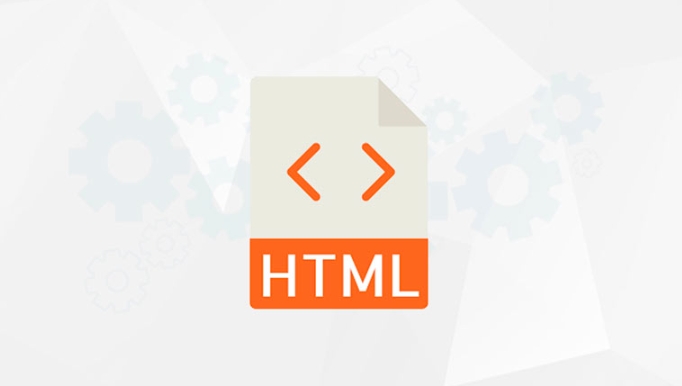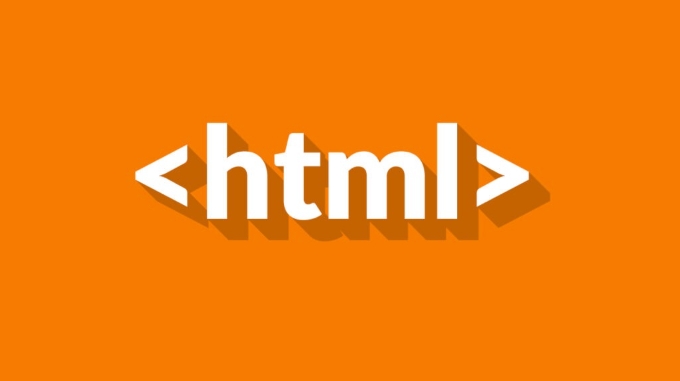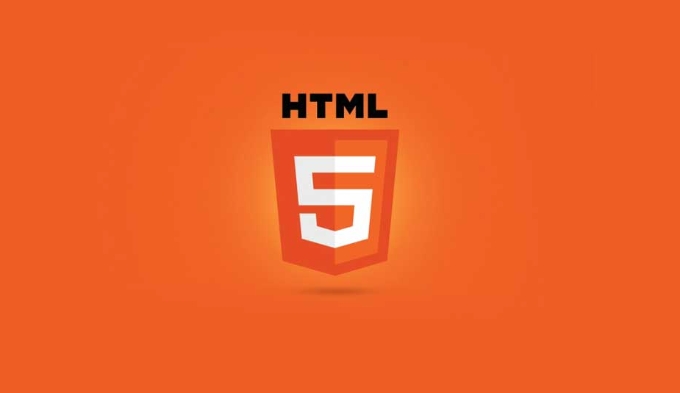Structuring data with the HTML ``, ``, `` description list.
Jul 03, 2025 am 02:16 AMUse the
<dl>, <dt> and <dd> tags of HTML to display terms and their definitions, product features, or key-value pairs clearly and semantically. 1. It is suitable for scenarios such as vocabulary, metadata (such as file details), FAQs and product specifications; 2. A <dl> wraps multiple <dt> (terms) and <dd> (descriptions) on the structure, which can support multiple interpretations for one term; 3. When used correctly, avoid wrapping each group of items in their respective <dl>, and should not nest titles or paragraphs in them; 4. Styles can be added through CSS to improve readability, such as setting spacing, indentation, font bolding, or using flex/grid layout. This structure is not only concise and clear, but also improves the accessibility and SEO effect of the web page.
Sometimes you may need a way to display terms and their definitions, product features, or other key-value pairs in a clean and semantic way. The HTML <dl></dl> , <dt></dt> , and <dd></dd> tags are perfect for this — they're underused but incredibly useful when applied correctly.
 `, `<dt> `, `
<dd> ` description list." />
`, `<dt> `, `
<dd> ` description list." />What is a description list?
A description list ( <dl></dl> ) is a structured way to present a list of terms ( <dt></dt> ) and their corresponding descriptions ( <dd></dd> ). Unlike unordered or ordered lists, it's designed specifically for pairing labels with explanations.
 `, `
<dt> `, `
<dd> ` description list." />
`, `
<dt> `, `
<dd> ` description list." />You'll often see it used in glossaries, FAQs, or even metadata displays (like on product pages). It's not just about how things look — using the right tags improves accessibility and SEO by clearly defining relationships between terms and their descriptions.
When should you use it?
Use a description list when:
 `, `
<dt> `, `
<dd> ` description list." />
`, `
<dt> `, `
<dd> ` description list." />- You're listing terms and definitions (eg, a glossary)
- Displaying metadata like file details (size, type, date modified)
- Presenting frequently asked questions and answers
- Showing product specs (color, size, price, etc.)
It's especially handy when you have multiple items that each need a label and explanation. For example:
- A settings panel where each setting has a name and value
- An API documentation page showing parameters and what they do
- A contact section with labeled info like phone, email, address
How to structure it properly
The basic structure looks like this:
<dl> <dt>Term 1</dt> <dd>Description for Term 1</dd> <dt>Term 2</dt> <dd>Description for Term 2</dd> </dl>
Each <dt> represents a term, and each <dd> gives its definition or explanation. You can have more than one <dd> per <dt> if needed — for example, if a word has multiple meanings.
One thing people sometimes miss: don't wrap each pair in a separate <dl> . Just one <dl> wraps all the pairs. Also, avoid putting headers or paragraphs inside — keep it simple and semantic.
Styling tips
By default, browsers apply minimum styling, so you'll probably want to add some CSS. Here are a few quick suggestions:
- Add spacing between each term-description pair
- Indent the
<dd>elements slightly for visual hierarchy - Make
<dt>bold or change font weight to stand out - Use flexbox or grid to align them side-by-side on larger screens
For example:
dl {
display: grid;
grid-template-columns: max-content auto;
gap: 0.5em;
line-height: 1.5;
}
dt {
font-weight: bold;
}This helps create a clean layout without relying on extra divs or wrappers.
Basically that's it. It's a straightforward element set once you get the hang of it — and when used appropriately, it makes your markup cleaner and more meaningful.
The above is the detailed content of Structuring data with the HTML ``, ``, `` description list.. For more information, please follow other related articles on the PHP Chinese website!

Hot AI Tools

Undress AI Tool
Undress images for free

Undresser.AI Undress
AI-powered app for creating realistic nude photos

AI Clothes Remover
Online AI tool for removing clothes from photos.

Clothoff.io
AI clothes remover

Video Face Swap
Swap faces in any video effortlessly with our completely free AI face swap tool!

Hot Article

Hot Tools

Notepad++7.3.1
Easy-to-use and free code editor

SublimeText3 Chinese version
Chinese version, very easy to use

Zend Studio 13.0.1
Powerful PHP integrated development environment

Dreamweaver CS6
Visual web development tools

SublimeText3 Mac version
God-level code editing software (SublimeText3)

Hot Topics
 How do I embed PHP code in an HTML file?
Jun 22, 2025 am 01:00 AM
How do I embed PHP code in an HTML file?
Jun 22, 2025 am 01:00 AM
You can embed PHP code into HTML files, but make sure that the file has an extension of .php so that the server can parse it correctly. Use standard tags to wrap PHP code, insert dynamic content anywhere in HTML. In addition, you can switch PHP and HTML multiple times in the same file to realize dynamic functions such as conditional rendering. Be sure to pay attention to the server configuration and syntax correctness to avoid problems caused by short labels, quotation mark errors or omitted end labels.
 How do I minimize the size of HTML files?
Jun 24, 2025 am 12:53 AM
How do I minimize the size of HTML files?
Jun 24, 2025 am 12:53 AM
To reduce the size of HTML files, you need to clean up redundant code, compress content, and optimize structure. 1. Delete unused tags, comments and extra blanks to reduce volume; 2. Move inline CSS and JavaScript to external files and merge multiple scripts or style blocks; 3. Simplify label syntax without affecting parsing, such as omitting optional closed tags or using short attributes; 4. After cleaning, enable server-side compression technologies such as Gzip or Brotli to further reduce the transmission volume. These steps can significantly improve page loading performance without sacrificing functionality.
 How has HTML evolved over time, and what are the key milestones in its history?
Jun 24, 2025 am 12:54 AM
How has HTML evolved over time, and what are the key milestones in its history?
Jun 24, 2025 am 12:54 AM
HTMLhasevolvedsignificantlysinceitscreationtomeetthegrowingdemandsofwebdevelopersandusers.Initiallyasimplemarkuplanguageforsharingdocuments,ithasundergonemajorupdates,includingHTML2.0,whichintroducedforms;HTML3.x,whichaddedvisualenhancementsandlayout
 What is the declaration, and what does it do?
Jun 24, 2025 am 12:57 AM
What is the declaration, and what does it do?
Jun 24, 2025 am 12:57 AM
Adeclarationisaformalstatementthatsomethingistrue,official,orrequired,usedtoclearlydefineorannounceanintent,fact,orrule.Itplaysakeyroleinprogrammingbydefiningvariablesandfunctions,inlegalcontextsbyreportingfactsunderoath,andindailylifebymakingintenti
 How do I use the element to represent the footer of a document or section?
Jun 25, 2025 am 12:57 AM
How do I use the element to represent the footer of a document or section?
Jun 25, 2025 am 12:57 AM
It is a semantic tag used in HTML5 to define the bottom of the page or content block, usually including copyright information, contact information or navigation links; it can be placed at the bottom of the page or nested in, etc. tags as the end of the block; when using it, you should pay attention to avoid repeated abuse and irrelevant content.
 How do I use the tabindex attribute to control the tab order of elements?
Jun 24, 2025 am 12:56 AM
How do I use the tabindex attribute to control the tab order of elements?
Jun 24, 2025 am 12:56 AM
ThetabindexattributecontrolshowelementsreceivefocusviatheTabkey,withthreemainvalues:tabindex="0"addsanelementtothenaturaltaborder,tabindex="-1"allowsprogrammaticfocusonly,andtabindex="n"(positivenumber)setsacustomtabbing
 What is the purpose of the input type='range'?
Jun 23, 2025 am 12:17 AM
What is the purpose of the input type='range'?
Jun 23, 2025 am 12:17 AM
inputtype="range" is used to create a slider control, allowing the user to select a value from a predefined range. 1. It is mainly suitable for scenes where values ??need to be selected intuitively, such as adjusting volume, brightness or scoring systems; 2. The basic structure includes min, max and step attributes, which set the minimum value, maximum value and step size respectively; 3. This value can be obtained and used in real time through JavaScript to improve the interactive experience; 4. It is recommended to display the current value and pay attention to accessibility and browser compatibility issues when using it.
 How do I associate a label with a form element using the for attribute?
Jun 21, 2025 am 09:58 AM
How do I associate a label with a form element using the for attribute?
Jun 21, 2025 am 09:58 AM
The most direct way for label tags to be associated with form elements is to use the for attribute and be consistent with the form element's id. The specific steps are as follows: 1. Set the id for the form element; 2. Set the same for attribute value in the corresponding label label. For example, if the id of input is "username", the for attribute of label should also be set to "username". This not only realizes the function of clicking on the tag to focus the input box, but also improves the friendliness of barrier-free access. Compared with nesting methods, using for and id is more flexible, clear and controllable. Pay attention to avoid spelling errors, duplicate ids, and confusing name and id.






